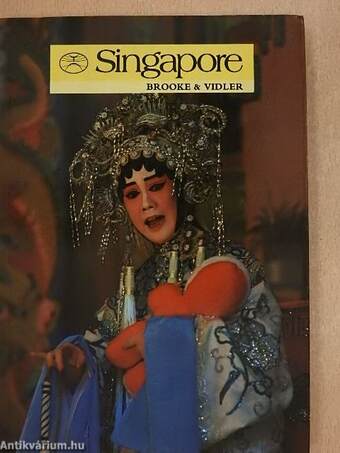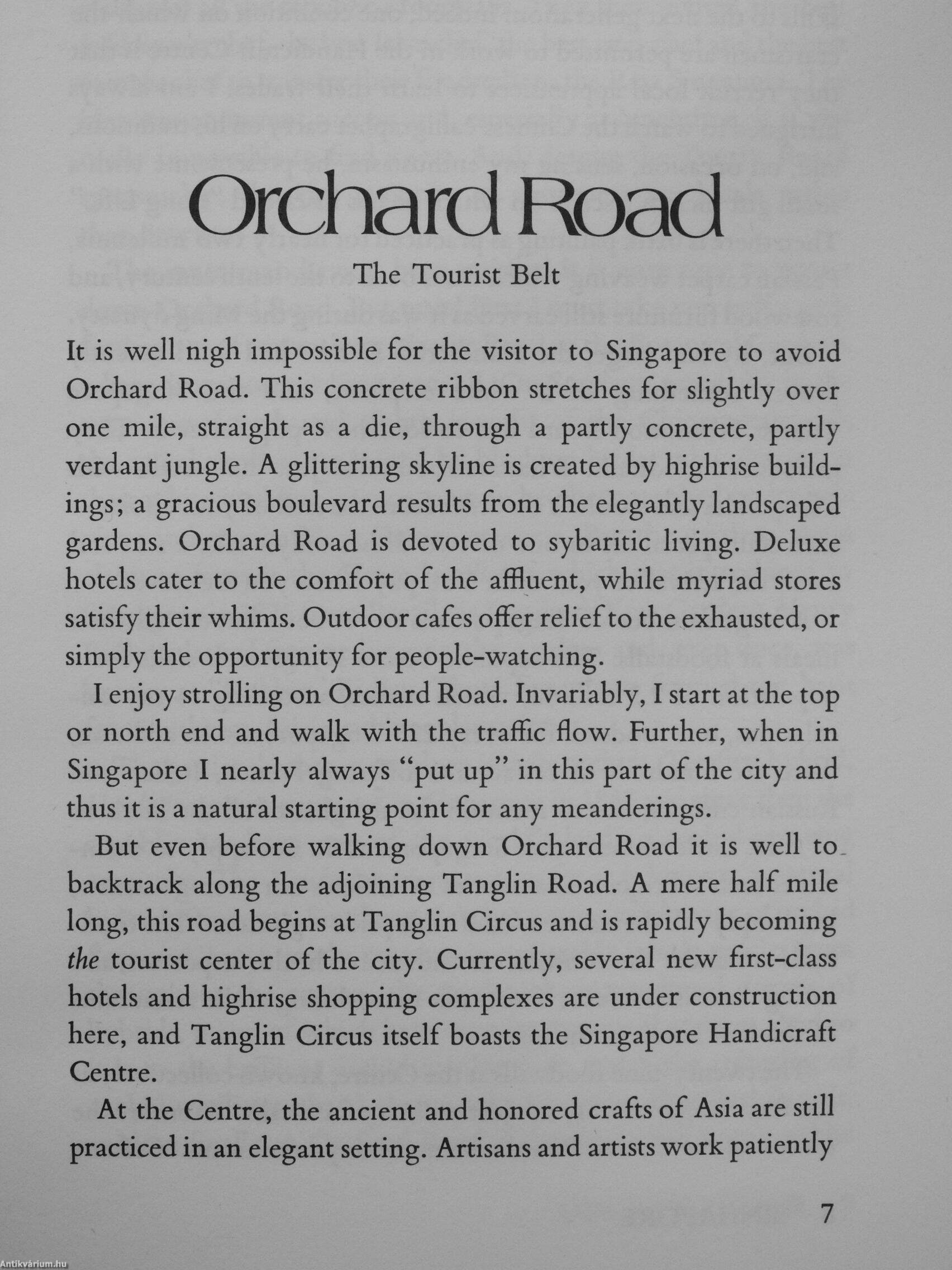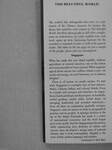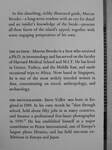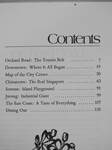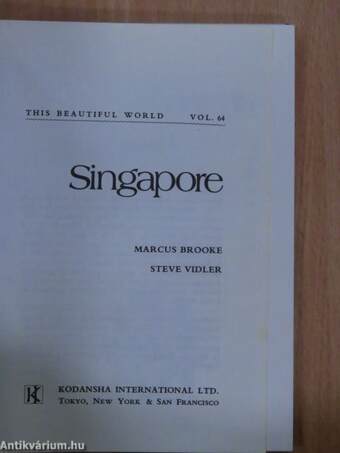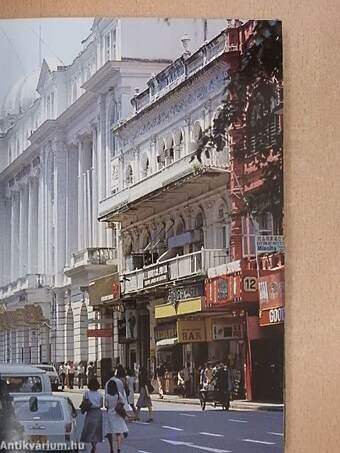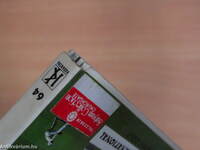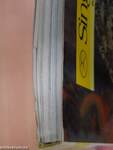1.117.329
kiadvánnyal nyújtjuk Magyarország legnagyobb antikvár könyv-kínálatát
Singapore
| Kiadó: | Kodansha International Ltd. |
|---|---|
| Kiadás helye: | Tokió |
| Kiadás éve: | |
| Kötés típusa: | Ragasztott papírkötés |
| Oldalszám: | 139 oldal |
| Sorozatcím: | This Beautiful World |
| Kötetszám: | 64 |
| Nyelv: | Angol |
| Méret: | 18 cm x 13 cm |
| ISBN: | 0-87011-225-2 |
| Megjegyzés: | Színes fotókkal illusztrálva. |
naponta értesítjük a beérkező friss
kiadványokról
naponta értesítjük a beérkező friss
kiadványokról
Előszó
TovábbFülszöveg
THIS BEAUTIFUL WORLD
The symbol that distinguishes this series is a styl-ization of the Chinese character for beauty, the theme that underlies each volume in This Beautiful World. Excellent photographs in full color complement an authoritative yet easily readable text; each book opens up new, fascinating horizons for the armchair or seasoned traveler as well as the generál reader. The titles on the last page are just a sample of the people, places and arts encompassed.
Singapore
What has made this tiny island republic, without agriculture or mineral resources, one of the richest and most successful of Asian nations? What magnetic appeal draws almost two millión visitors a year—its youth and energy, its racial harmony, or its culinary delights?
There is, of course, no simple answer. To start with, Singapore is a complex mix of four cultures: Malay, Chinese, Indián, and colonial British. From its temples and mosques and churches; its magni-ficent hotels and shops and... Tovább
Fülszöveg
THIS BEAUTIFUL WORLD
The symbol that distinguishes this series is a styl-ization of the Chinese character for beauty, the theme that underlies each volume in This Beautiful World. Excellent photographs in full color complement an authoritative yet easily readable text; each book opens up new, fascinating horizons for the armchair or seasoned traveler as well as the generál reader. The titles on the last page are just a sample of the people, places and arts encompassed.
Singapore
What has made this tiny island republic, without agriculture or mineral resources, one of the richest and most successful of Asian nations? What magnetic appeal draws almost two millión visitors a year—its youth and energy, its racial harmony, or its culinary delights?
There is, of course, no simple answer. To start with, Singapore is a complex mix of four cultures: Malay, Chinese, Indián, and colonial British. From its temples and mosques and churches; its magni-ficent hotels and shops and skyscrapers; its foodstalls, orchid gardens, cricket clubs, herbal shops; its sweeping boulevards and crowded waterways— from all these an explanation gradually emerges. Singapore owes its success to both its geographical position and its peoples. A strategie location at the tip of the Malay Peninsula has made it a center of international commerce and the third largest port in the world. And the Singaporeans themselves, while maintaining their diversity of culture and custotn, have developed a strong sense of national identity that is both cosmopolitan (English is the most widely spoken language) and modern.
(continued on back flap)
In this absorbing, richly illustrated guide, Marcus Brookc—a long-term resident with an eye for detail and an insider's knowledge of the locale—presents all these facets of the island's appeal, together with some engaging perspectives of his own.
the author : Marcus Brooke is a Scot who received a Ph.D. in immunology and has served on the faculty of Harvard Medical School and M.I.T. He has lived in Greece, Turkey, and the Middle East, and made occasional trips to Africa. Now based in Singapore, he is one of the most widely traveled writers in Asia, concentrating on travel, anthropology, and archaeology.
the photographer: Steve Vidler was born in En-gland in 1949. In his own words he "shot through school, held about fifty jobs in as many countries, and became a professional free-lance photographer in 1970." He has established himself as a major contributor to Pictor International, one of Europe's largest photo libraries, and has held one-man ex-hibitions in Europe and Japan. Vissza


